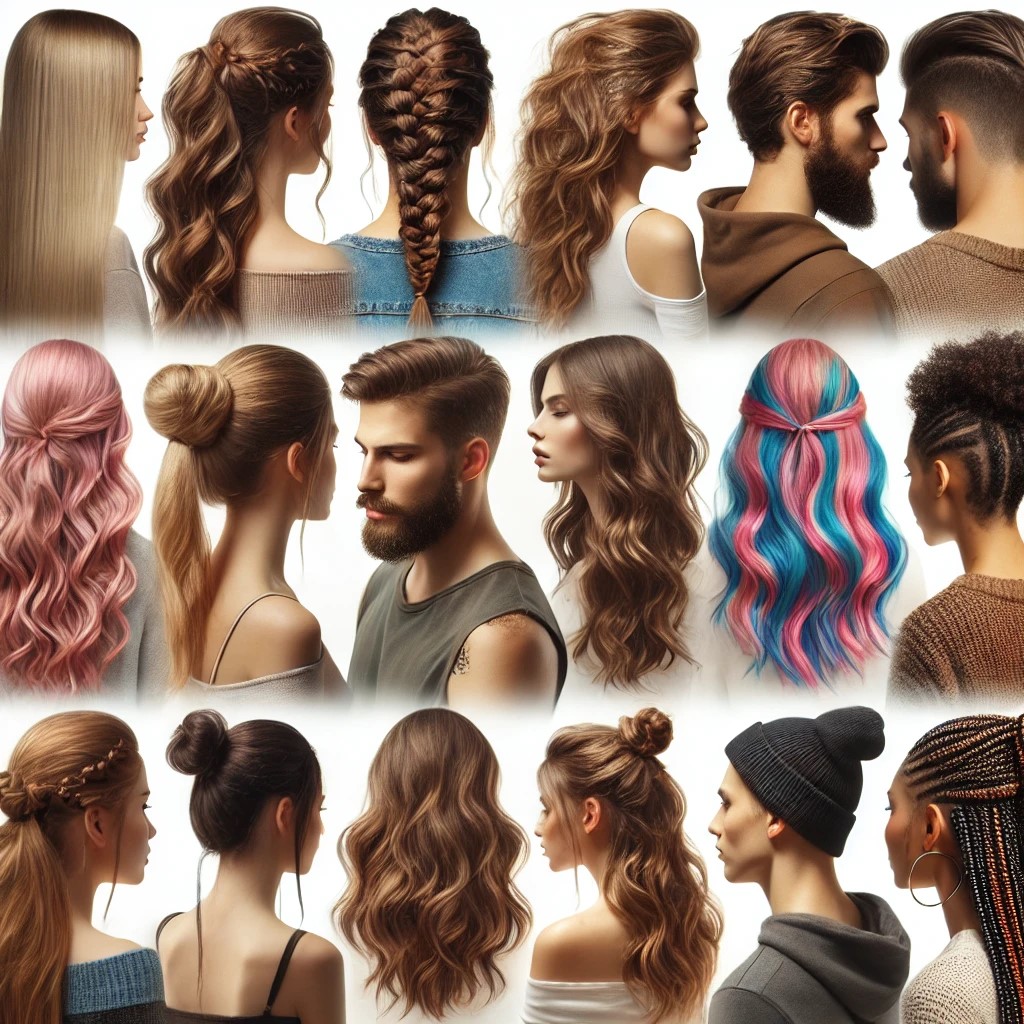Types Of Hair Extensions
Hair extensions are a fantastic way to transform your look, whether you want to add length, volume, or a splash of color. With so many options available, it’s essential to understand the different types of hair extensions, their application methods, and which one best suits your needs. Here’s a comprehensive guide to the various types of Hair Extensions, helping you make an informed choice.

1. Clip-In Hair Extensions
Best for: Temporary use, beginners, quick changes.
Application: Clip-in extensions are the most temporary and easiest to apply. They consist of wefts of hair attached to small clips that you snap into your natural hair. You can put them in and remove them yourself in minutes, making them ideal for events, parties, or whenever you want a quick change.
Pros:
- Easy to apply and remove.
- No damage to your natural hair.
- Reusable and versatile.
Cons:
- They may not blend well with thin or very short hair.
- Can feel bulky if not applied properly.
2. Tape-In Hair Extensions
Best for: Semi-permanent wear, medium to thick hair.
Application: Tape-in extensions are thin, lightweight wefts of hair with adhesive tape along the top. A stylist sandwiches a thin section of your natural hair between two wefts, securing them close to the scalp. This method is less bulky and provides a seamless look that lasts 6-8 weeks with proper care.
Pros:
- Quick to apply (usually takes 1-2 hours).
- Less visible and lightweight.
- Reusable if maintained properly.
Cons:
- Must be installed by a professional.
- Requires regular maintenance every 6-8 weeks.
- Avoid oil-based products near the roots, as they can loosen the tape.
3. Sew-In Hair Extensions (Weave)
Best for: Thick, coarse hair, long-term wear.
Application: Sew-in extensions, also known as weaves, are applied by braiding natural hair close to the scalp and then sewing the hair extensions into the braids with a needle and thread. This method is popular with those who have thick, coarse hair, as it provides a durable, long-lasting result.
Pros:
- Long-lasting (up to 2-3 months).
- Adds significant volume and length.
- Suitable for those with thick hair.
Cons:
- Time-consuming application process (can take several hours).
- Can put tension on the scalp and cause discomfort.
- Requires regular maintenance as your hair grows.
4. Fusion (Keratin Bond) Hair Extensions
Best for: Long-term wear, all hair types.
Application: Fusion or keratin bond extensions involve attaching small strands of extensions to your natural hair using a keratin adhesive. A stylist uses a heating tool to fuse the bond to your hair, creating a strong, long-lasting attachment. This method can last up to 3-4 months and provides a very natural look.
Pros:
- Long-lasting and secure.
- Blends seamlessly with natural hair.
- Customizable for volume, length, and even highlights.
Cons:
- Time-consuming (can take several hours to apply).
- Must be applied and removed by a professional.
- The heat application can damage natural hair.
5. Micro-Link (Micro-Bead) Hair Extensions
Best for: Medium to thick hair, semi-permanent wear.
Application: Micro-link extensions are applied by looping small sections of your natural hair through a tiny bead, which is then clamped shut to hold the extension in place. This method doesn’t use glue, tape, or heat, making it a more natural option for many people.
Pros:
- No glue or heat involved.
- Easily adjustable as your hair grows.
- Reusable if maintained properly.
Cons:
- Can slip out if not applied correctly.
- Not suitable for very fine or thin hair.
- Can cause tension or breakage if not maintained properly.
6. Halo Hair Extensions
Best for: Temporary use, beginners, low-maintenance.
Application: Halo extensions are a newer, temporary method where the hair extension is attached to a thin, clear wire that sits on your head like a halo. The wire is hidden under your natural hair, giving the illusion of added length and volume without the need for clips, glue, or adhesives.
Pros:
- Quick and easy to apply.
- No damage to natural hair.
- Comfortable and lightweight.
Cons:
- May not blend well with very short hair.
- Not as secure as other methods for high-intensity activities.
7. Pre-Bonded Extensions
Best for: Long-term wear, all hair types.
Application: Pre-bonded extensions come with a keratin bond pre-attached to each strand, which is melted and bonded to small sections of your natural hair using a heating tool. This method is similar to fusion extensions but quicker to apply since the bonds are pre-made.
Pros:
- Long-lasting (up to 4 months).
- Secure and natural-looking.
- Can be customized for length, volume, and color.
Cons:
- Heat application can damage hair.
- Requires professional installation and removal.
- Time-consuming and expensive.
8. Wigs and Hairpieces
Best for: Complete hair transformation, temporary use.
Application: Wigs and hairpieces provide full coverage or partial coverage for those looking to change their hairstyle completely. Wigs can be made from synthetic or natural hair and come in various styles and lengths, allowing you to experiment with different looks without altering your natural hair.
Pros:
- Instant, dramatic change.
- No damage to natural hair.
- Wide variety of styles and colors.
Cons:
- Can feel hot or uncomfortable with long wear.
- Requires maintenance to keep looking fresh.
- High-quality wigs can be expensive.
Conclusion When choosing the best type of hair extensions, it’s essential to consider your hair type, lifestyle, and how long you want to wear the extensions. From quick, temporary options like clip-ins to more permanent solutions like tape-ins or fusion extensions, there’s an option for everyone. With the right care and maintenance, hair extensions can help you achieve your dream hair in no time!
Leave a Reply